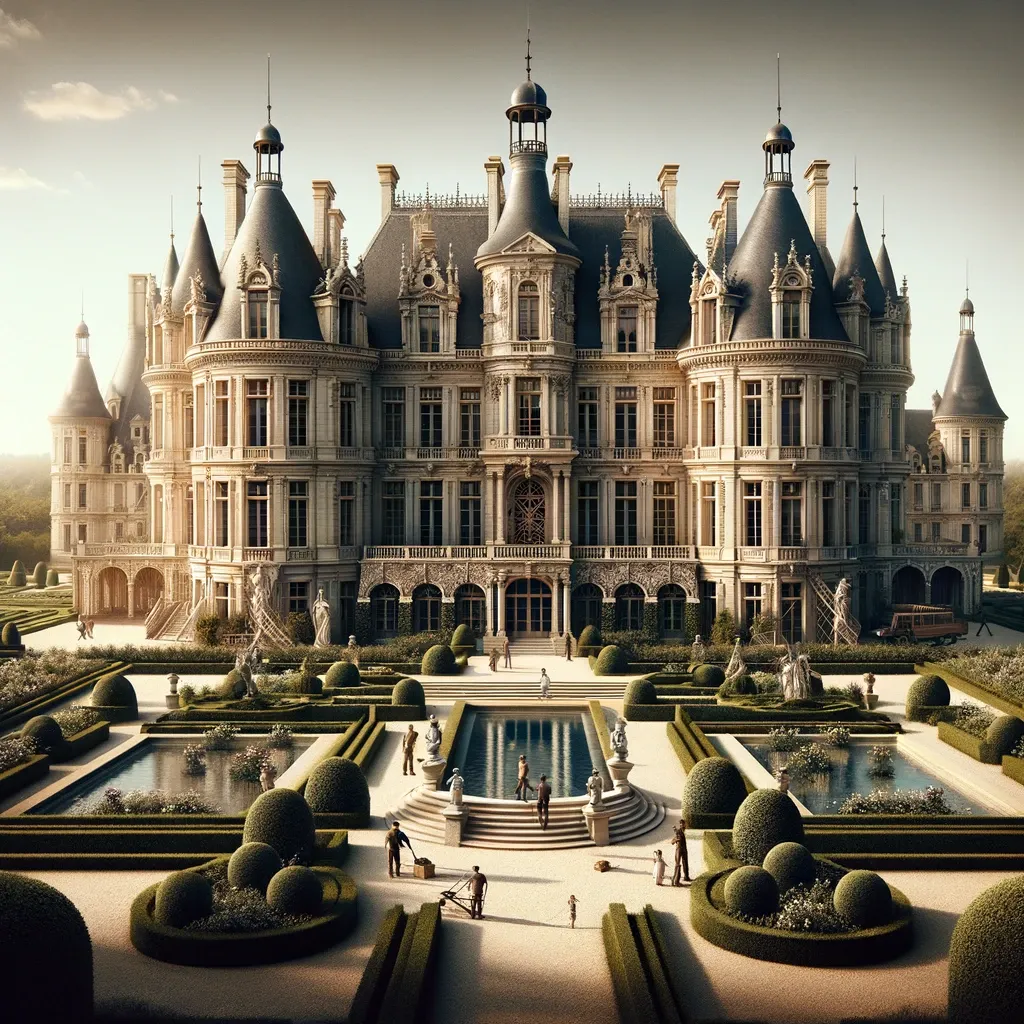The restoration of a French17th century castle with a focus on ecological sustainability - a monumental event

At the bottom opposite the Chateau de La Chèze, founded in1676 and serving as a winery, is a fountain with a full moon motif, which looks at the entrance. Here you can see the embodiment of French classicism: blue shutters, a cream facade, and well-groomed bushes, the line of which leads to the door, above which is a relief of "Apollo Bacchus".".
Located within the990-acre landscape park and vineyards in the Beaujolais region of Burgundy, the Chateau de La Chèze, built in the17th century, has elegant proportions based on the Golden Ratio.
The history of Chateau de La Cheze
350 years ago, founder Jean-François de La Cheze d'Ex hired architect Jules Hardouin-Mansart and landscape architect André Le Nôtre to design the Château de La Cheze castle.
To carry out recent restoration work without compromising the historical integrity of the estate, the owner, Christophe Gru, turned to Didier Repellin, the chief architect of French Historical Monuments.
Château de La Chèze was built on the foundations of the Château de La Duz, which overlooked Mont-Bruy. In 1670, Jean-François de La Chèze d'Ex, a lieutenant of King Louis XIV, purchased the castle and hired architect Jules Hardouin-Mansart to construct a new castle, using the proportions of the Golden Ratio – a mathematical relationship commonly found in nature that ensures perfect symmetry between two ratios. He also commissioned landscape architect André Le Nôtre, the king's gardener who created the gardens of Versailles, to use similar techniques in designing the castle's green spaces.
Restoration work and sustainable development
Under the leadership of Christophe Gru, the owner of the castle, significant changes have taken place aimed at preserving the spirit of the Château de La Chèze.
First of all, the team recreated the entrance to the entire winery, connecting it to the cellar and building sturdy passageways. A new bottling and storage facility was also constructed, utilizing a production system with minimal carbon dioxide emissions, based entirely on the principle of gravity.
Owner Christoph Gru and his nephew, winemaker Boris Gru, are leading the estate towards more sustainable practices with the goal of obtaining organic certification by 2022.
Château de la Chèze Storage
The Château de La Chèze storage, in use for almost a century, has remained untouched. However, Repellin and his team have enhanced its remarkable wooden structure to highlight the stainless steel tanks, even adding a VIP area behind a glass wall.
The nearly 400-foot cellar of Château de La Chèze, built almost a century after the estate was founded, was one of the largest cellars in the world at that time.




He points out that it is crucial to remember that we are here to build for people, with our own hands. "A monument is a repository of old technologies, especially in cases where they are good and can teach us lessons," says Repellin. "We must adapt [structures] to modern conditions, but preserve their spirit and the reason they were built."
To learn more about Château de La Chèze, visitsite.
Sara Lieberman is a travel and lifestyle journalist originally from New York, currently living in Paris. Her work has been published in The New York Times, The Washington Post, AFAR, Condé Nast Traveler, Hemispheres, and other publications. Published on November 11, 2021.
Comment
Popular Posts
Popular Offers

Subscribe to the newsletter from Hatamatata.com!
Subscribe to the newsletter from Hatamatata.com!
I agree to the processing of personal data and confidentiality rules of Hatamatata








